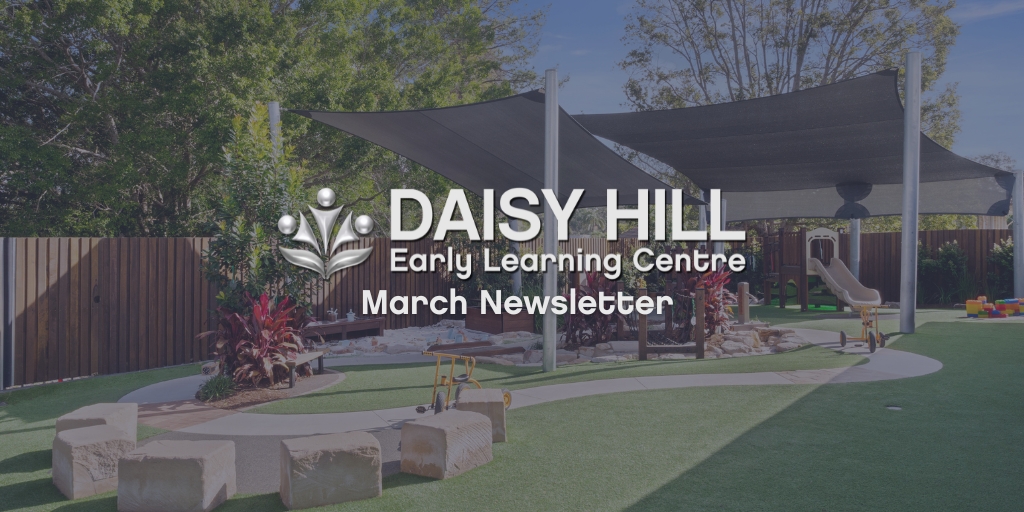Hello everyone from our Daisy Hill Early Learning Centre!
Daisy Hill ELC would like to respectfully acknowledge the Yugambeh people, the Traditional Owners of the lands on which we live. We also recognise those whose ongoing efforts to protect and promote Aboriginal and Torres Strait Islander cultures will leave a lasting legacy for future Elders and leaders.
Welcome to another GREAT month.
Firstly, we would like to extend a warm welcome to our new families that have recently joined us. We are so excited to be part of your child’s journey creating wonderful memories that will be remembered for years to come. Everyone has settled well into their classrooms and a lot of exciting experiences are happening all over the centre. We trust that we will keep moving forward in a positive direction for another wonderful year.
| Public Holidays coming up: 7 Apr |
Fri | Good Friday | |
| 8 Apr | Sat | Day following Good Friday | |
| 9 Apr | Sun | Easter Sunday | |
| 10 Apr | Mon | Easter Monday |
Testing boundaries – Risky Play?
Do today’s environments encourage children to assess and take risks or are we, as educators, risk-averse?
The National Quality Standard promotes that services have environments that are inclusive, and promote competence, independent exploration and learning through play (Standard 3.2).
Remember back to when you were a child and experienced the intense, positive exhilaration of achieving mastery and the sense of achievement when the risk has passed. Children need to feel the thrill of overcoming their fear and launching into the unknown to master a new skill or experience. Children who have opportunities to assess and manage risk at an early age effectively will be better equipped to deal with risk as an adult.
Let us know what you think about risk-taking and risky play in childcare.
What Is Separation Anxiety?
In early childhood, crying or clinginess are healthy reactions to separation and a normal stage of development. Separation anxiety can begin before a child’s first birthday and may pop up again or last until a child is four years old. However, both the intensity level and timing of separation anxiety vary tremendously from child to child. A little worry over leaving a parent is normal, even when your child is older. You can ease your child’s separation anxiety by staying patient and consistent, and by gently but firmly setting limits.
How to ease separation anxiety
Practice separation. Leave your child with a caregiver for brief periods and short distances at first. As your child gets used to separation, you can gradually leave for longer and travel further.
Develop a quick “goodbye” ritual. Rituals are reassuring and can be as simple as a special wave through the window or a goodbye kiss. Keep things quick, though, so you can:
Leave without fanfare. Tell your child you are leaving and that you will return, then go—don’t stall or make it a bigger deal than it is.
Try not to give in. Reassure your child that they will be just fine—setting consistent limits will help your child’s adjustment to separation.
For more information, please speak to your child/ren’s teacher. Separation anxiety is normal, and you are not the first or last to experience it, you are not alone, and you are doing a great job.
House Keeping:
*Please ensure that your children’s belongings are clearly labelled.
*All children are to wear a hat in our outdoor environment, please enquire at the front office about purchasing a Daisy Hill ELC hat if you would like, otherwise, a hat from home must come with your child every day.






